Previewing the Concepts
What do the following terms from the Science of Learning mean to you?
How do you think they might relate to pool?
Expert thinking
Schema
Pattern recognition
Think-alouds
You may have heard of chess puzzles like the one below where players figure out checkmate in two moves:
https://chesspuzzlesonline.com/2016/04/07/mate-in-2-white-to-move/
Would you believe there are similar puzzles for pool?
Pool Puzzles
Every Thursday, I get an email from pool teacher Tor Lowry with the weekly pattern puzzle. It looks something like this:
(Image from Tor Lowry’s Patreon page July 24, 2025)
You’re playing 8-ball. Your opponent scratched on the break, so you have ball-in-hand (you can place the cue ball anywhere). Choose stripes or solids, plan your full run, and call the pocket for each shot.
Members of Tor’s Patreon group post ideas during the week, and then Tor shares his solution on Sunday. There’s no single “correct” answer—but the best ones follow repeatable patterns that have a logical flow and avoid tricky hero shots.
When I first joined, it seemed impossibly difficult. I’d watch veteran players post brilliant solutions while I sat there bewildered. But over time, I started recognizing the patterns—and even posted winning solutions of my own.
By the way, here is the posted solution to the above puzzle:
3TR (combo w/10 and bump 8), 5LS, 1LR, 7TL, 4TS, 6LR, 2TL, 8LL
(TR = top right, LS = lower side, etc.)
Watch Tor’s 40-second run-out here:
What’s amazing is that several players independently saw the same solution. How?
Schema: Learning to See the Table
Schema is an important concept from psychology and refers to a broader mental framework that generalizes from past experience and helps you quickly understand, predict, and respond in familiar situations. For example, when you walk into a restaurant, you don’t need a step-by-step guide. You already know the script: wait to be seated, scan the menu, order food, eat, pay, and leave. You don’t panic about whether to grab the silverware from another table or walk into the kitchen — your mind carries a ready-made schema for “restaurant.”
Pool experts carry the same kind of schemas, but instead of menus and servers, their schemas are about ball layouts and shot sequences. Where a novice just sees a random scatter of colors, the expert instantly recognizes a familiar “pattern” — a three-ball sequence starts with a shot into the side pocket, or a common cluster that calls for a break-out shot. They don’t consciously calculate every option; their schema makes the next steps feel obvious.
This is the heart of pattern play: once you’ve built enough schemas, the table no longer feels like chaos. It feels like a map you already know how to read.
Pattern Play = Pool Schema
Pool players don’t often say “schema”—they talk about pattern play. It means sequencing shots to run out the table efficiently. Below are a few pattern play principles that act like schema:
These principles become automatic with practice, freeing up brainpower for creativity and decision-making.
Teaching Pattern Play
When Tor teaches, he starts small—with 3-ball patterns. Try this: Where would you place the cue ball to run the 1, 2, and 3 in order?
Just thinking about it—even without solving it—is a form of schema-building. You’re hungry to hear the answer. That’s the power of problem posing.
Here’s Tor’s solution with a 3-minute demo:
Tor shows how:
He comes into the line for the 2 after pocketing the 1
The 2 and 3 are connected when shot from the steeper angle
He uses a natural angle to float to the 3 after sinking the 2
This is expert thinking made visible.
Pattern Recognition and Memory
These ideas trace back to chess. In the 1940s, Dutch psychologist Adriaan de Groot found that grandmasters weren’t faster calculators—they just saw more patterns.
Adriaan de Groot Herb Simon and Bill Chase working on their 1973 experiment https://pressbooks.pub/thiscouldbeimportantbook/chapter/127/
In the 1970s, Chase and Simon ran memory experiments:
Experts could remember real-game chess positions quickly
But when pieces were random, their advantage disappeared
Key insight: Experts don’t have super memory—they have schema.
Expert Decision-Making
Another key feature of schema has to do with how experts make decisions. Psychologist Gary Klein studied firefighters, pilots, and ER doctors to figure out how they use their expertise to make intuitive decisions. His research showed that experts don’t carefully weigh every option; instead, they rely on recognition-primed decision making — quickly matching the situation in front of them to familiar schemas built from years of experience.
Gary Klein giving a TED Talk
“Experts don’t compare options. They recognize a situation, and the recognition activates the appropriate course of action.”
— Gary Klein, Sources of Power (1998, p. 31)
In pool, this is exactly what happens when players see a pattern and immediately know what to do.
Klein also developed an accelerated method of training people in expert thinking. He would show a problem scenario to the learner and have them try to figure out what was happening. Then, he would have them listen to an expert describe what they saw in the scenario. In this way, the learner would develop their own schema through contextualized explanations and learning. Sound familiar?
Teaching with Think-Alouds
When teachers like Tor Lowry break down their expert thinking and decision making, they are helping novice players build schema by using a technique that in education is referred to as a ‘Think-Aloud.’
In the 1980s, Anders Ericsson and Herbert Simon developed think-alouds to study problem-solving. Later, educator David Pearson used them in classrooms to model how skilled readers predict or summarize. This technique makes invisible thinking visible, helping learners build schema.
In pool, this is the same process that allows advanced players to “see” a three-ball pattern instantly. When instructors like Tor Lowry use think-alouds in their videos, they are essentially revealing this hidden recognition process, narrating the schema so that learners can begin to build the same mental library of patterns for themselves.
Summing It Up
Experts use schema to understand, predict, and respond in familiar situations.
For pool players they learn to ‘see’ the table by developing ‘pattern play’ which are essentially types of schema that help them see how to sequence and shoot a run of balls on the table.
Schema and pattern play can be taught through ‘think aloud’ techniques in which the student tries to solve a challenging situation and then compares their answer to that of an expert who explains their decision-making process
Experts become automatic in their ability to see these patterns on the pool table
If you want to work on your pattern play or join Tor’s Patreon page, I have put some links to his websites/videos below.
How about you?
What are other examples of schema from pool or other skills you have learned?
What struck you most about the ideas in this post?
How might you apply ‘think alouds’ and ‘schema building’ in your own learning?
Works Cited
Chase, W. G., & Simon, H. A. (1973). “Perception in Chess.” Cognitive Psychology, 4(1), 55–81.
De Groot, A. D. (1965). Thought and Choice in Chess. Mouton.
Ericsson, K. A., & Simon, H. A. (1993). Protocol Analysis: Verbal Reports as Data (Rev. ed.). MIT Press.
Klein, G. (1998). Sources of Power: How People Make Decisions. MIT Press.
Klein, G. (2016, July 6). Can we trust our intuition? [Video]. YouTube. TEDx Talks.
Lowry, T. [Zero-X Billiards]. (2022, September 27). Drills to sharpen your 8-ball / 9-ball game! [Video]. YouTube.
Lowry, T. [Zero-X Billiards]. (n.d.). Zero-X Billiards on Patreon. Patreon. https://www.patreon.com/c/zeroxbilliards/posts
Lowry, T. [Zero-X Billiards]. (n.d.). Pool instruction videos. Zero-X Billiards. https://www.zerox-billiards.com/pool-instruction-videos-1Pearson, P. D., & Fielding, L. (1991). “Comprehension instruction.” In Barr et al. (Eds.), Handbook of Reading Research, Vol. 2. Longman.
If you enjoyed this post, please leave a ‘like’ or a comment! Stay tuned for the next installment of The Learning Cue!

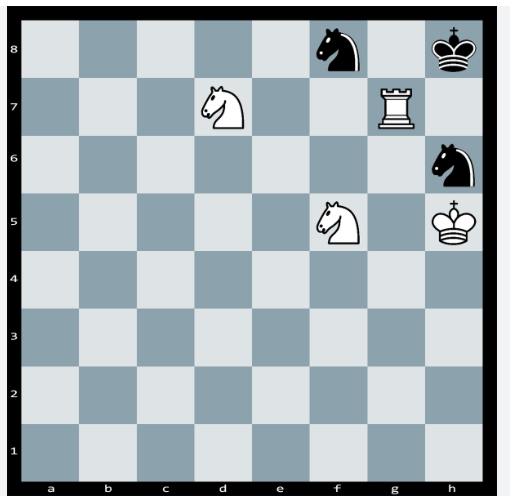
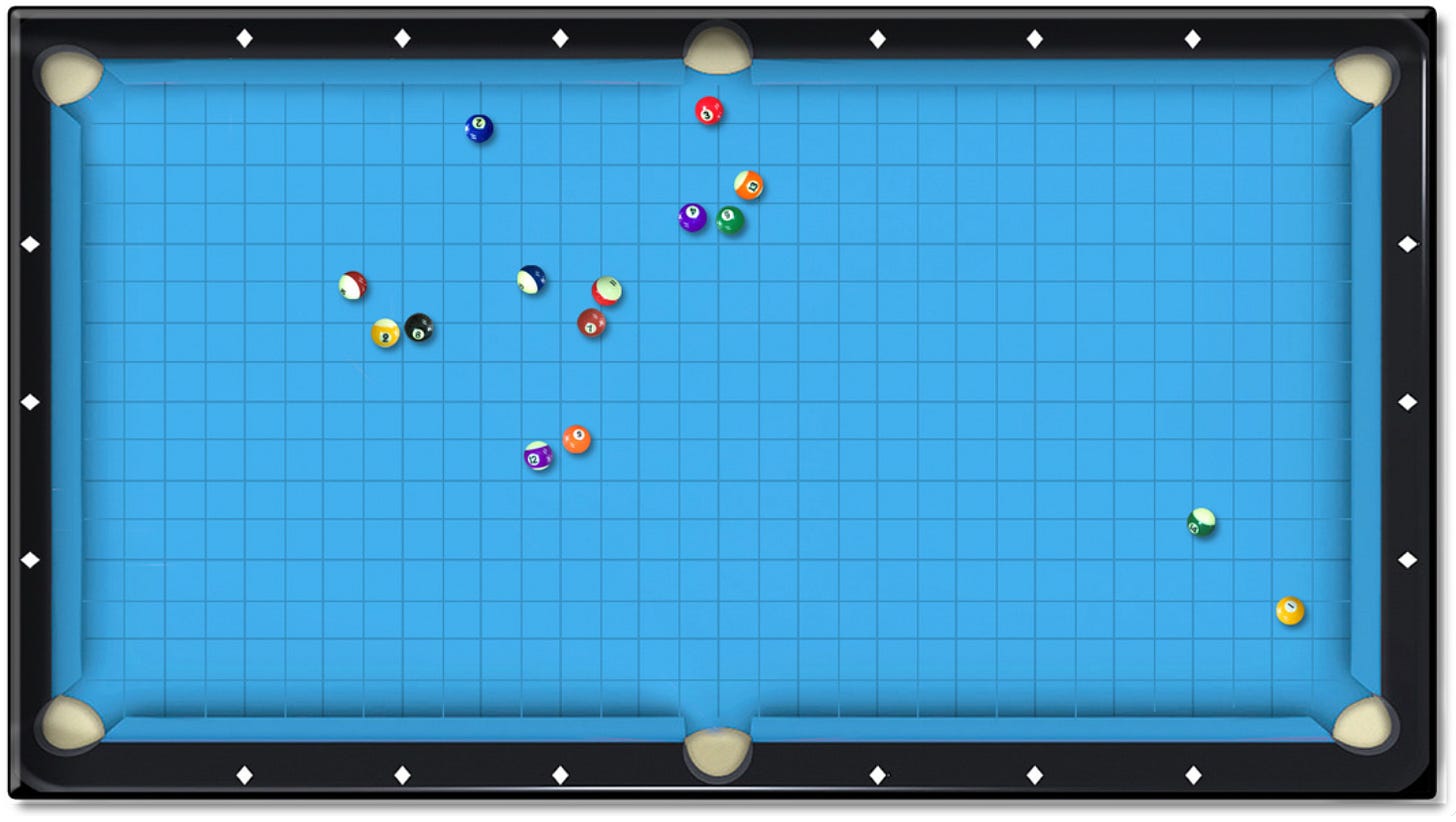
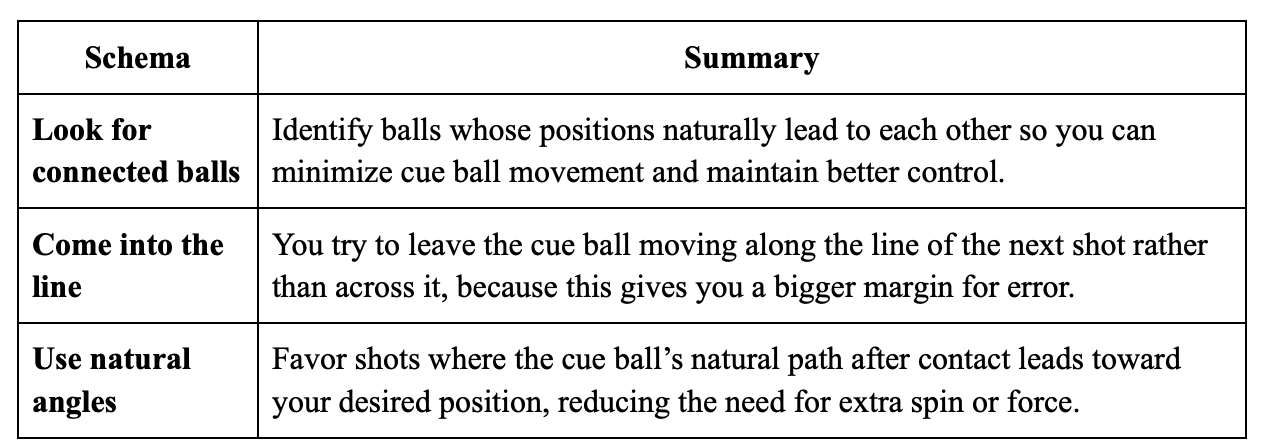
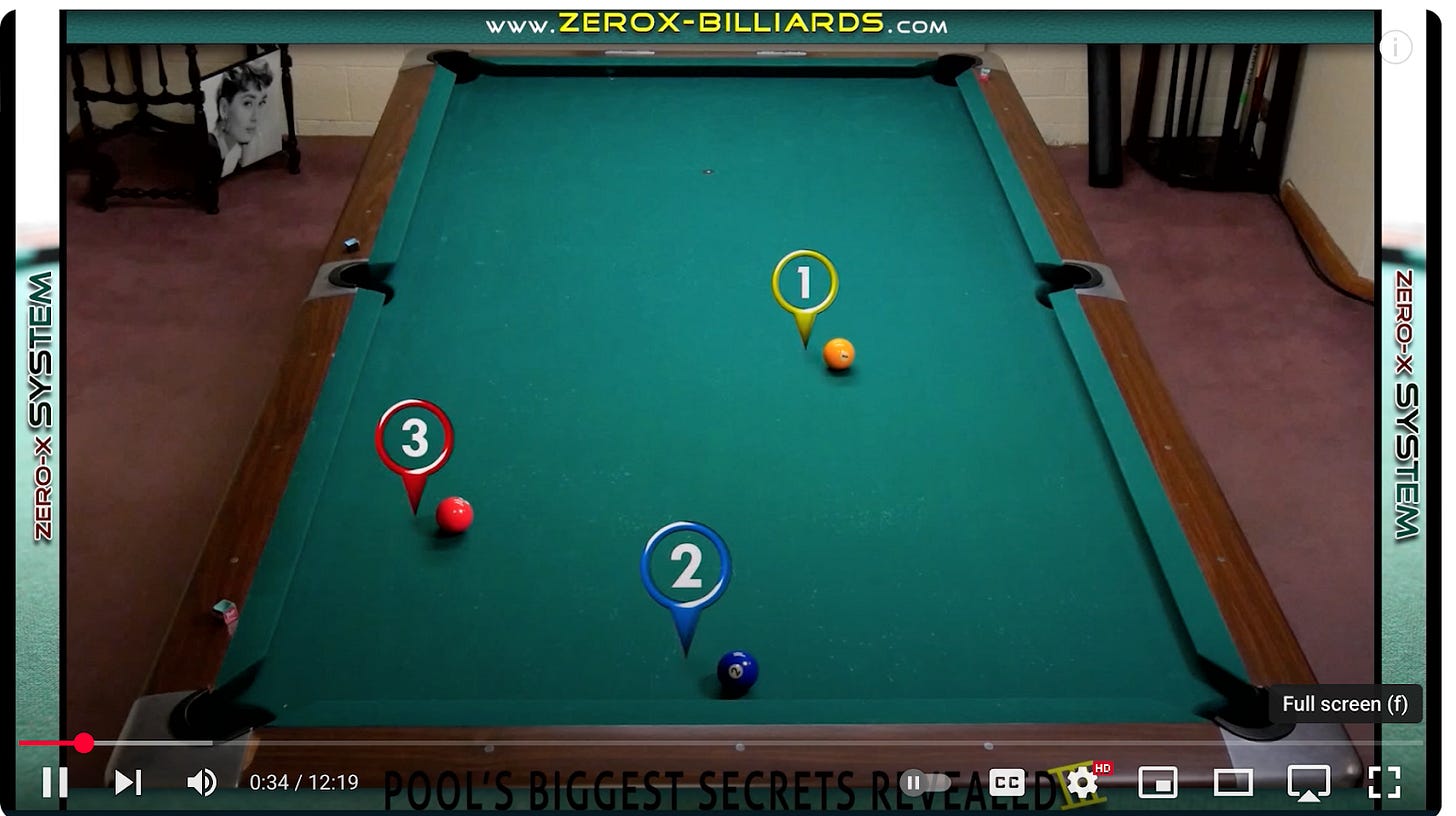
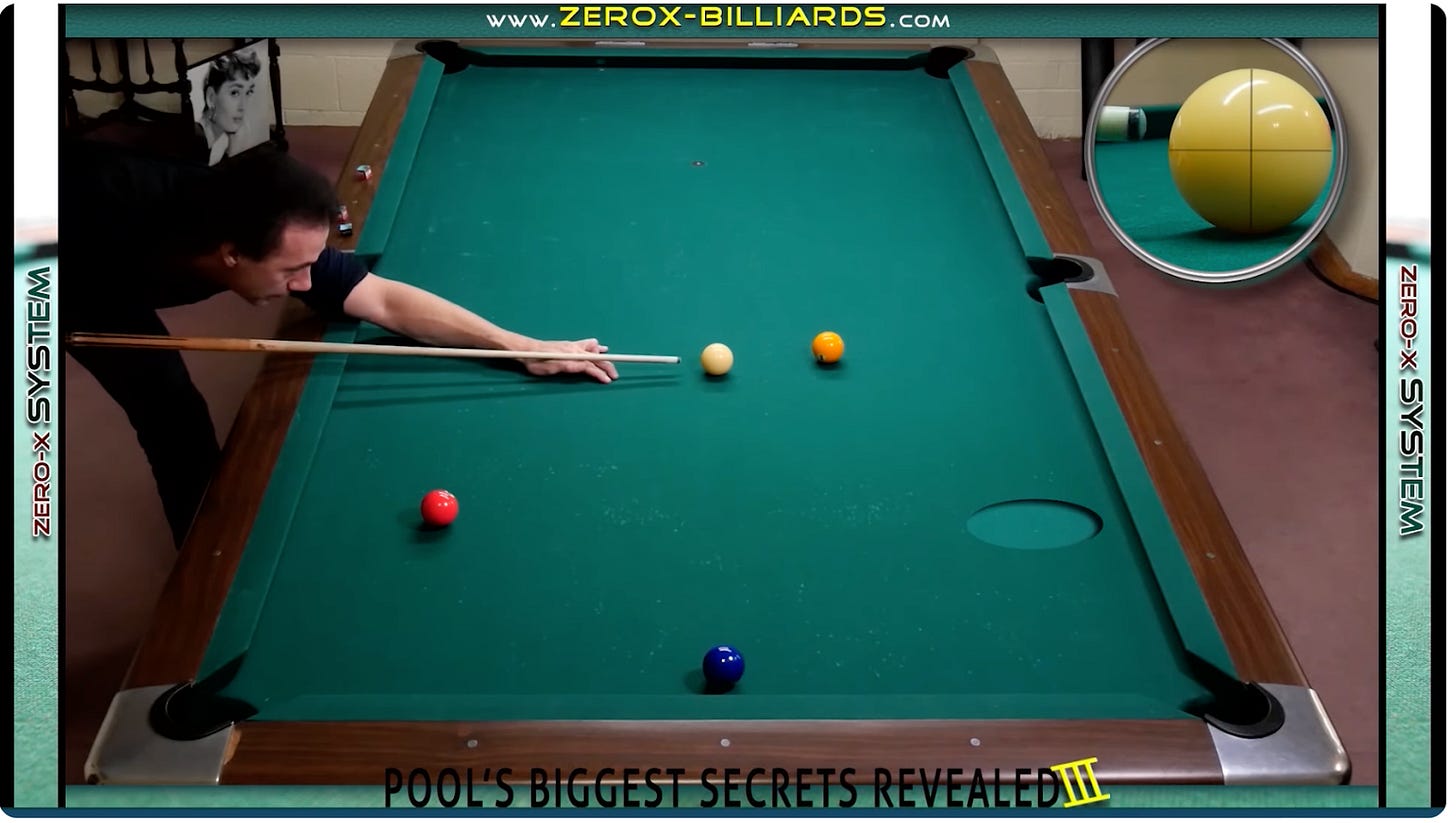
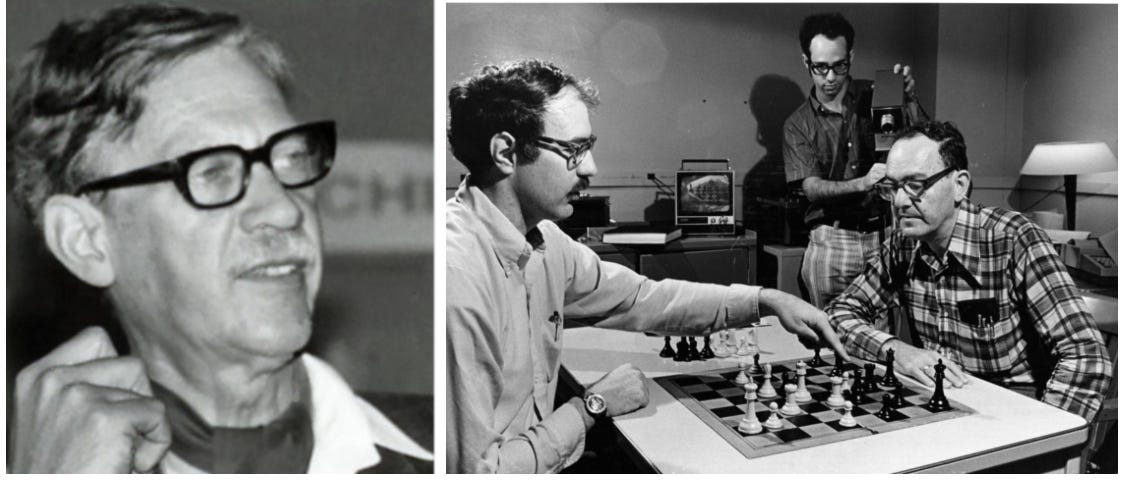

When most people think of pool/billiards i expect that they think of the games of 8-ball and 9-ball. There are many patterns/schema that arise in those games about shot making and position play. They are wonderfully complex and interesting games. But I think the most complex and fascinating schema arise in the game of “one pocket”. I get so frustrated trying to explain how fascinating and complex and wonderful the game is, to people that have never played it